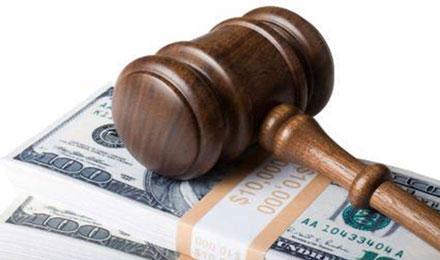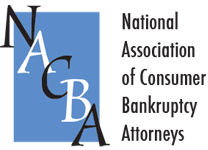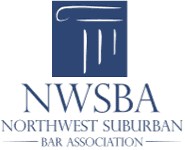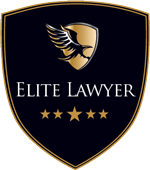121 S. Wilke Road, Suite 301, Arlington Heights, IL 60005
Home and Hospital Visits for Your Convenience
Serving Clients Across 7 Illinois Locations
Litigating Personal Injury Claims: Litigating Claims Regarding Substandard Insurers

By: Gary Newland
Have you ever had a personal injury claim against an insurance company that will not call back and generally will not make an offer? The insurance company likely is a substandard company. There are many substandard insurance companies in Illinois. Substandard insurance companies generally insure those folks that have below average driving records, provide policy limits that are usually $20,000.00 to $25,000.00 and fight personal injury compensation tooth and nail.
This article is one of a series of articles that I have prepared based upon my experience in proceeding with different types of injury claims. This article will deal with strategies to successfully combat substandard insurance tactics. With certainty I can tell you the unfortunate reality of substandard litigation is that you will earn every dollar you collect. Also your clients will be under great stress from the discovery process and taking time off work for trial. As a result of the personal impact of the litigation process on plaintiffs, substandard insurance companies have been very successful at deterring lawsuits. The successes of the substandard insurance companies have caused many standard insurance companies to adopt the tenacious tactics of their substandard counter parts.
Even in light of the above I have found that substandard claims can be worth taking if you have the proper formula for success. The formula involves three elements: (1) liability, (2) type of medical treatment and (3) a good client. If you have clear liability, treatment conducted or supported by medical opinions and a client that is prepared to have the claim go on often for over two years then proceeding can be economically worthwhile.
The substandard insurer intends to make pursuing the claim so economically impractical that you will either drop the case or be reluctant to take another claim against the substandard insurance company again. It is important to remember you are running a business based on contingency fee structure and thus can apply resources on what are often times relatively smaller claims. Because of the defense posture and strategy in litigating substandard claims, a sound formula for success is the key to a good outcome for both the attorney and the client.
In the article I prepared last month addressing catastrophic injury claims, I stated “a lawyer should not file a case if they are not willing to go to trial.” The same is true in a substandard claim. At the time you accept a substandard case you should advise the client the claim would likely be held in court because if there is an offer to settle the case the amount will likely be less than what many may consider reasonable. Keep in mind the full policy will generally not be tendered in settlement unless the actual damages are in excess of the policy. Remember the goal of the substandard insurance company is to make proceeding economically impracticable. Alternatively your goal is to make the claim economically problematic for the insurance company. The latter is achievable by accepting cases that meet a successful formula.
Recently I had a case involving a substandard insurance company that met my formula. The attorney for the defense said he would likely tender the policy before trial started and that I should just accept the fact that this is how the game is played and my policy demand was denied for now. I asked him why I would accept the policy at the time of trial if I were prepared for trial and the attorney said, “Everyone does.” Unfortunately for the insurance company neither my client nor I were going to accept being bullied in a decent case. We took the case to trial and received a judgment for more than twice the policy. It was my associate Erin Walgrave’s first jury trial and she did a great job.
In assessing the economics of a substandard claim it is critical to know what will be involved in being prepared. As a result, knowing the strength of your claim is just as important as assessing the weaknesses. Below I will provide points you should consider on how to proceed with many injury claims against substandard insurance companies:
1. Always make an Olympia Fields policy demand.
2. Generally, upon taking the case, contact your client’s insurance and make a demand for uninsured and underinsured coverage and then name an arbitrator. If you make the demand for uninsured and underinsured arbitration upfront then you will have no contractual limitations issues later.
3. Always prepare your client for the battle and make sure they are up for the fight. You will find as the insurance companies have that many perspective plaintiffs have more important things to do with their time then deal with such a claim for what can be a nite award of compensation. The fact is the client’s time is worth money as well. For example, after costs and fees how much will the client really net? Keep in mind the client is only concerned about the net proceeds and a successful verdict means little if the client's proceeds are eaten up by costs
4. Remember if you have some permanency or have sufficient medical and the demand for policy is not met then you should pursue an excess policy if there is no underinsured. Generally the substandard will not settle for excess policy and you will need to earn the excess at trial. You can obtain an excess policy if you demand a policy and the demand is rejected in bad faith and or not responded to timely.
5. Always try and get the defendant to spend money in a substandard claim. If the defense needs to hire an expert or incur costs then the claim becomes less viable when the policy is low for the defense.
6. One of the best tools to keep the costs down is serving requests to admit fact upon the defendant. Requests to admit, if denied, and often times are denied in bad faith allow the attorney for the plaintiff to be awarded fees in proving up what was denied in bad faith. You are only owed this sanction if you actually prove what was denied.
7. Many times smaller claims are typically not worth the expense of bringing in the treater. Can you win without a treater testifying?
8. Generally the defense will not bother with depositions of (f)(2) witnesses in a substandard claim. Therefore, if you are going to call a treating physician then make sure your (f)(2) interrogatory is properly answered or the court will not allow testimony. Make sure you establish in your (f)(2) disclosure the treatment that was necessary, the treatment that was causally related to the injury and that the charge for the treatment was reasonable and customary.
9. Motions in limine are very important. You should always try to get prior injuries excluded if you can with a motion in limine.
10. Jury instructions are equally as important as motions in limine. An excellent trial attorney and former Cook County Law Division Judge William Haddad has a web page haddadtrialbook. com which contains templates for jury instructions on many different types of cases.
Keep in mind many of the attorneys that represent substandard carriers charge a monthly fee in return for volume business and others charge rates per case or through part of a case. The fact is insurance companies want the claims to move slowly and the defense attorneys are incentivized to do so based on pay structure. Regardless of the payment structure of the defense, in my experience, the attorneys representing the substandard insurance companies are excellent and formidable opponents.
Accordingly, the payment structure of the defense lawyer by substandard insurance company is generally not conducive to responding to complicated motions. You want to make sure you take advantage of the fact that papering your opponent may help you gain an advantage by making your case less pro table to the defense. A mentor and trial lawyer, Steven L Richards, provided me a copy of his motion for partial summary judgment many years ago he utilized in a personal injury claim. He explained filing the motion is worth the time if you can take issues off the table for trial. I have adopted Steven Richards’s strategy of using partial summary judgment in personal injury claims when appropriate. If you can obtain partial summary judgment on medical bills or liability then the trial is often times much more efficient and compelling to the jury.
In conclusion, substandard claims can be pursued in an economically viable way although the primary negative aspect of taking claims against substandard insurance companies is the great deal of work needed to obtain compensation. Hopefully this article helps you develop a method to maximize outcomes through settlement or trial. If you can find a formula that works then you will earn the reputation of a respected and effective trial lawyer.
Gary A. Newland is a partner in Newland & Newland, LLP. Gary has recovered well over $30,000,000.00 for clients. He practices in all areas of injury law and is a member of the Illinois Trial Lawyers and Co-Chair of the NWSBA Civil Litigation Committee.

 Spanish
Spanish Cantonese
Cantonese




















